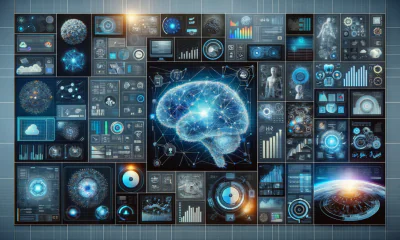Thought Leaders
The Power of Self-Managed Content

If you’ve ever had the pleasure of watching a karate or judo sensei in practice, you’ve probably been floored by the incredible strength that radiates from their cool, controlled movements. The effortless presentation is the result of the sensei’s dedication to endlessly fine-tuning the myriad internal systems – body, brain, mind – that compose the whole (and getting those systems to communicate with each other instantaneously and constantly). The sensei knows where his or her energetic resources lie and how to harness them effectively depending on the context of a particular technique.
A well-run business operates in a similar way. The more organized and accessible its resources are (and the more its various systems talk to and with each other), the more effectively the organization will be able to pivot, scale, and expand when and where needed.
Many businesses today are floundering beneath the weight of rapidly generated content that hasn’t been properly contextualized or organized within their internal systems. They’re embracing new technology with all the fervor of a white belt who’s more excited about the gear than the techniques that will turn the gear into a legitimate uniform.
The solution to this conundrum is self-managed content. Self-managed content refers to the use of AI and neural networks to simplify and strengthen the content creation process via smart tagging, metadata templates, and modular content. Together with a robust DAM framework, these strategies help businesses deliver consistent, on-brand messaging to the right audience at points of high intent.
The importance of a unified (and interactive) asset repository
The purpose of technology is, ideally, to simplify life for humans by making our jobs a bit easier. Digital asset management provides a single source of truth for a business’ content. This helps enormously in keeping assets organized. But when it comes to managing a DAM with multiple users (who are often working from multiple locations), businesses can still run into issues if assets aren’t easily findable.
As it turns out, this is a common issue. Over 50% of executives in a recent survey reported that they were in need of a solution that would allow them to improve content findability, re-use, and personalization.
Part of the issue is that people tend to think of DAM as a static repository for their assets. But a DAM can become an interactive solution–a self-managing content hub–when it’s supported by the right technologies.
Role of AI and neural networks in self-management of digital assets
Metadata is key in the success of self-managing content. Metadata is a description of an asset provided by a user when it’s uploaded to DAM. This can include words or phrases that are commonly associated with a piece of content, longer text descriptions of the asset, and terms specific to a business (for example, if the asset is related to a specific product or campaign).
The self-managing element comes in thanks to the integration of neural networks and AI. These technologies are able to auto tag assets using capabilities like image recognition, speech-to-text transcription, and optical character recognition (OCR). This enhances the value of information included and optimizes modular content strategies that can help scale content operations across the organization. It also supports natural language search capacities, making content much more discoverable for users who have no prior knowledge of metadata or cataloging structures.
Self-managing content systems also significantly streamline workflows by automating time-consuming tasks such as content tagging and categorization. These systems also provide enhanced reporting capabilities and provide insights into content performance and user engagement.
How self-managed content drives value for businesses
From an administrative perspective, self-managing content reduces overhead and improves efficiency, as discussed above. But it also gives users the ability to build out modular content strategies, which ultimately help give customers a connected experience across the different channels offered by a brand – and this improves a businesses’ bottom line.
Modular content blocks are essentially pieces of content that have been curated for a specific customer group. After being created, they can be stored in DAM and integrated into user workflow, so that users can have ready access to the blocks when working on projects. AI-powered meta data shows users where these curated content blocks reside within the DAM, along with associated context, suggestions, and enriched data. The self-managing capabilities inherent within this structure – saving users thousands of hours they’d otherwise use digging for contextually relevant assets – can help businesses increase content reuse by at least 10%, which could translate to millions in savings per year.
Implementing AI in your DAM: how to get started with self-managing content
There are many ways a company can get started on the process of bringing their DAM to life with the dynamism of self-managing content capabilities. Here are a few suggestions on where to begin.
- Automate intelligent categorization (smart-tagging): use AI to automatically extract relevant keywords that reflect visual details, contextual relevance, and emotional tone. AI-powered DAM can allow users to repurpose content, generate variations, and reclaim hours of searching as they create meaningful campaigns.
- Predict (and preempt) needs: use AI to forecast asset relevance and automate the content lifecycle, keeping the library fresh and relevant without manual oversight. Predictive analytics can help guide content strategies and identify gaps in the asset library before they impact production
- Ensure ethical and regulatory compliance: Automate compliance checks using AI to scan and verify assets against regulatory and ethical standards, reducing risk and ensuring faster clearance for public use.
Self-managing content combines the power of intelligent technologies with the addition of data to form a holistic, contextually-rich ecosystem, imbuing intelligent DAM systems with the ability to easily identify, enhance, and reuse relevant assets.
Just as a sensei implements tried-and-true techniques to coach his or her systems into alignment, the addition of AI powered technologies can take your approach to content creation from a state of disorganized confusion into a state of order, accessibility, and mastery.








